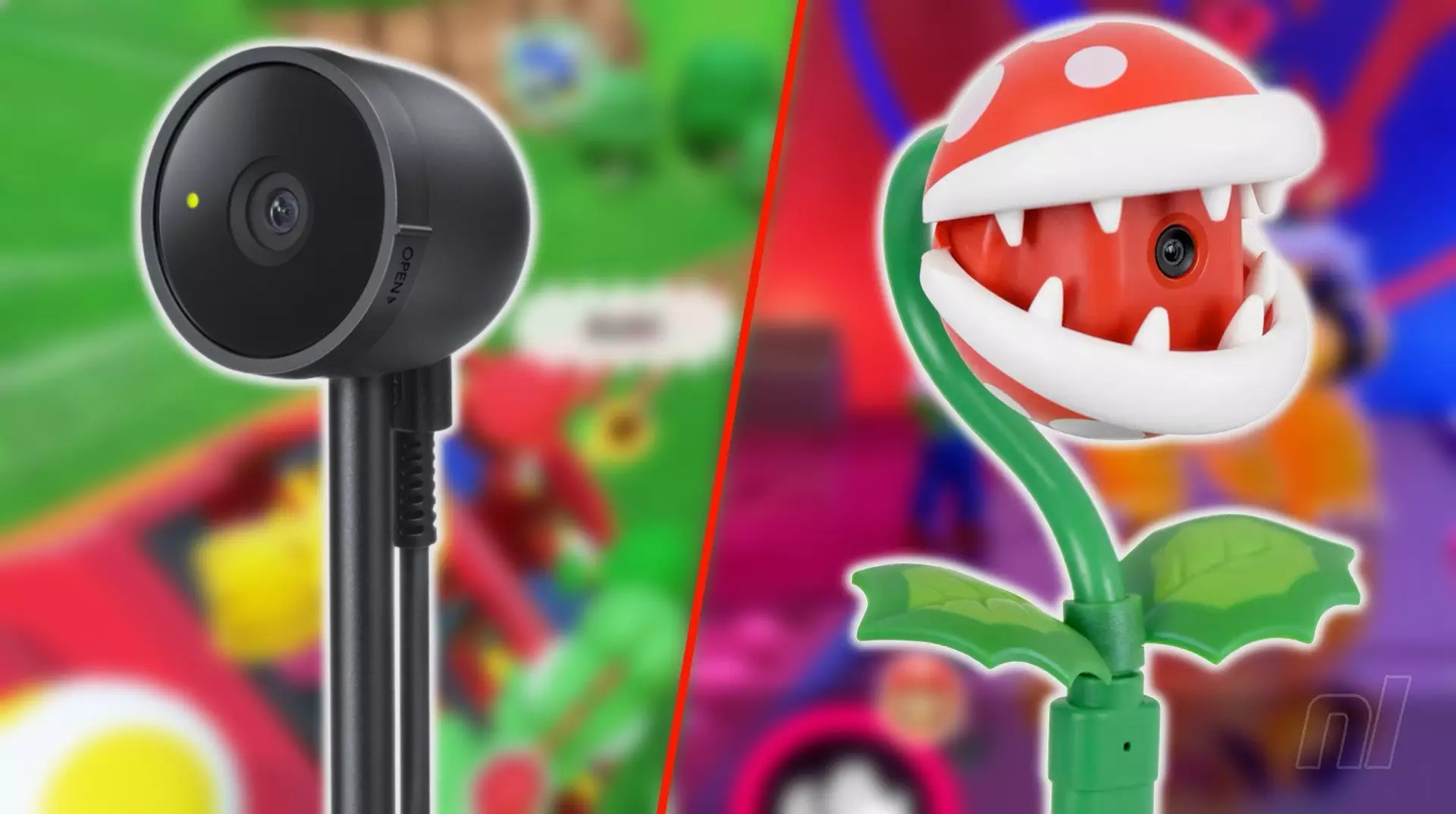When Nintendo announced the Switch 2 and its compatibility with USB-C cameras, many enthusiasts rejoiced at the prospect of using various camera accessories alongside their gaming experiences. The official statement touted the convenience of integrating any compatible USB-C camera, alongside a dedicated Nintendo Switch 2 camera sold separately. This message radiated simplicity and ease, igniting hopes for an expansive realm of possibilities. However, the optimistic facade quickly gives way to the nuanced complexities that come with camera compatibility in the gaming sphere.
The Compatibility Quandary
While the allure of versatile camera use is enticing, the reality is far from straightforward. Nintendo footnotes their succinct disclosure by warning that, despite the variety of compatible options, not every camera will seamlessly integrate with the console. Gamers are left grappling with the challenge of testing compatibility post-purchase, which can lead to frustration for those eager to dive into the multimedia potential of their devices. Relying solely on official endorsements leaves many players wistfully contemplating the potential capabilities of other accessories yet to be explored.
Additionally, an intriguing but perhaps misleading insight emerges from the community’s spirited exchanges. Some gamers have reported success utilizing USB-A cameras converted with a USB-A to USB-C adapter, especially when connected to the dock in TV mode. This revelation hints at an unexpected flexibility; however, the variability in success rates leaves users walking a tightrope of uncertainty. The experience of trying to connect familiar devices only to find them incompatible is a notably deflating journey.
Community Contributions: The Crowdsourced Solution
In the face of such inconsistency, the gaming community has stepped up in remarkable ways, creating master lists to aggregate compatible camera findings. This grassroots endeavor echoes the spirit of collaboration that defines gaming culture, encouraging users to share their experiences and insights. The existence of such lists symbolizes both the ingenuity of the players and their unwillingness to accept limitations imposed by commercial offerings alone.
A look into these community-curated lists reveals consistent patterns that can help users navigate their purchasing decisions. Brands like Logitech dominate the ‘working’ category with several models spanning various price ranges. Their diverse line-up suggests that consumers have several options at their disposal; however, caution must be exercised as trends emerge. Notably absent are cameras from brands like Elgato, Sony, and Insta360, which leads to the critical factor of brand assurance in this compatibility ecosystem. In the quest for functionality, it’s evident that not all well-regarded brands translate their reputation into successful console integration.
The Price of Discovery
As gamers explore their options, the prices of compatible cameras become a focal point of discussion. From budget-friendly models like the aoni A20 at $19 to the pricier Logitech Brio 501 priced at $129, the spectrum illustrates varied choices tailored to utilitarian needs. Customers must weigh both quality and compatibility; intending not only to enhance their gameplay experience but often also to avoid the pitfall of investing in an incompatible camera. The risk of purchasing an expensive USB-C camera only to find it non-functional with the Switch 2 is a daunting challenge that gamers must confront.
Considering the personal anecdotes shared across forums and social media, it is apparent that a trial-and-error methodology is often necessary. Enthusiasts share their Tower of Babel-like stories of attempting to revive old, dusty cameras from storage to achieve some semblance of utility. This quest for adaptation speaks volumes about the desire to maximize resources, showcasing the innovative spirit that gaming culture embraces.
Reflecting on the Experience
In embracing this adventurous endeavor of connecting third-party cameras to the Nintendo Switch 2, gamers are left to ponder their own experiences. Will the community-driven lists hold steady as a reliable resource, or will fluctuating compatibility lead to wasted time and misinformed decisions? While the official word from Nintendo is certainly encouraging, the gaps in information mean consumers must remain vigilant. The excitement of new technology is tempered by the practical realities that define our interactions with it.
As users contemplate their next camera purchase, one can only hope that continued communal effort will help illuminate the murky waters of technology compatibility. Ultimately, the saga of the Nintendo Switch 2 and its camera functionalities represents a microcosm of the broader tech landscape—a reminder of both the inspirations we chase and the hurdles we must overcome. The journey toward finding the perfect camera may become just another chapter in the evolving story of gaming.

